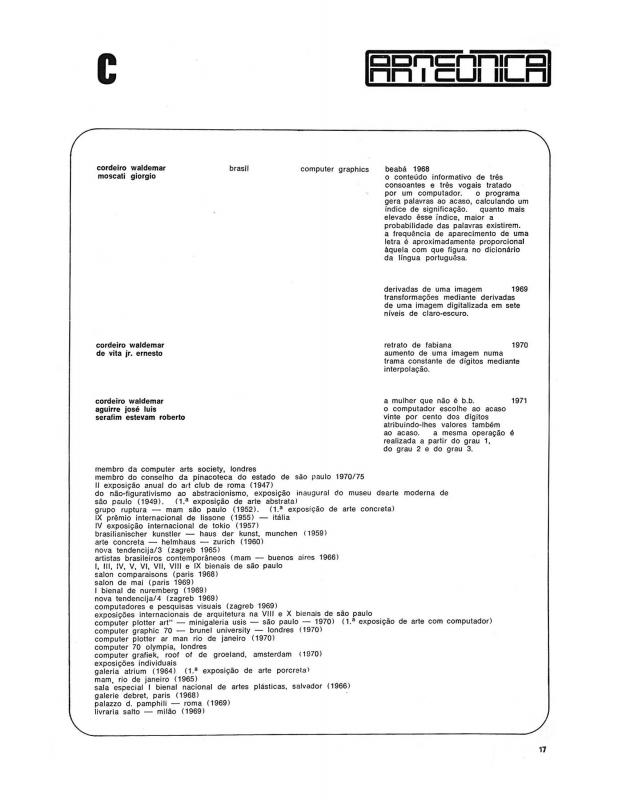Gilbertto Prado (b. 1954) is one of those artists we call multimedia artists, as well as a curator and major promoter of electronic art, both as an artist and as a theoretician. His art approach is described by the Czech theorist Frank Popper (b. 1944) in his book Art of the Electronic Age (Thames and Hudson, 1997). Prado was a member of the group Art-Réseaux (Paris), and starting in 1981, he participated in exhibitions in Brazil and abroad. These exhibitions included: Doppo il Turismo Vienne il Colonialismo (Centro Lavoro Arte, Milan, 1989); Moone, Atelier des Réseaux - Machines à Communiquer (La Villette, Paris, 1992); Mutations de l’image (Vidéothèque de Paris, 1994); Arte e Tecnologia (MAC/USP, São Paulo, 1995); Mediações (Itaú Cultural, São Paulo, 1997); 2ª Bienal de Artes Visuais do Mercosul (Porto Alegre, 1999); Link_Age/MECAD (Barcelona, 2000); and Interconnect@ between attention and immersion (ZKM, Karlsruhe, Germany, 2006).
Prado addressed this work in depth in the book Arte telemática (2003). There are a number of articles that touch on the themes of decentralization and the viability of the new exchanges, such as “Utilizações artísticas de imagens em direto na world wide web” [see doc. no. 1111125]; “Os sites de arte na rede internet” [doc. no. 1111124]; and a summary he himself wrote under the title of “Cronologia de experiências artísticas nas redes de telecomunicações” [doc. no. 1111289]. In this regard, one complementary perspective is provided by Suzete Venturelli in “Mundos virtuais e vidas artificiais” [doc. no. 1111136]; and another by André Lemos in “Arte eletrônica e cibercultura.”
It is also worth recalling the pioneering work in electronic art created by the concrete poet Waldemar Cordeiro (1925?73) under the name “arteônica.” As early as 1969, Cordeiro was using the enormous computers both at UNICamp (Campinas, SP) and at the Universidade de São Paulo. In that respect, see the 1970 text “Computer plotter art - primeira mostra na América Latina” [doc. no. 1110487] and, the following year’s “Arteônica” [doc. no. 1110836].






